

Exciting New GitHub Features Powering Machine Learning
source link: https://github.blog/2022-11-22-exciting-new-github-features-powering-machine-learning/
Go to the source link to view the article. You can view the picture content, updated content and better typesetting reading experience. If the link is broken, please click the button below to view the snapshot at that time.

Exciting New GitHub Features Powering Machine Learning
Discover the exciting enhancements in GitHub that empower Machine Learning practitioners to do more.

I’m a huge fan of machine learning: as far as I’m concerned, it’s an exciting way of creating software that combines the ingenuity of developers with the intelligence (sometimes hidden) in our data. Naturally, I store all my code in GitHub – but most of my work primarily happens on either my beefy desktop or some large VM in the cloud.
So I think it goes without saying, the GitHub Universe announcements made me super excited about building machine learning projects directly on GitHub. With that in mind, I thought I would try it out using one of my existing machine learning repositories. Here’s what I found.
Jupyter Notebooks
Machine learning can be quite messy when it comes to the exploration phase. This process is made much easier by using Jupyter notebooks. With notebooks you can try several ideas with different data and model shapes quite easily. The challenge for me, however, has been twofold: it’s hard to have ideas away from my desk, and notebooks are notoriously difficult to manage when working with others (WHAT DID YOU DO TO MY NOTEBOOK?!?!?).
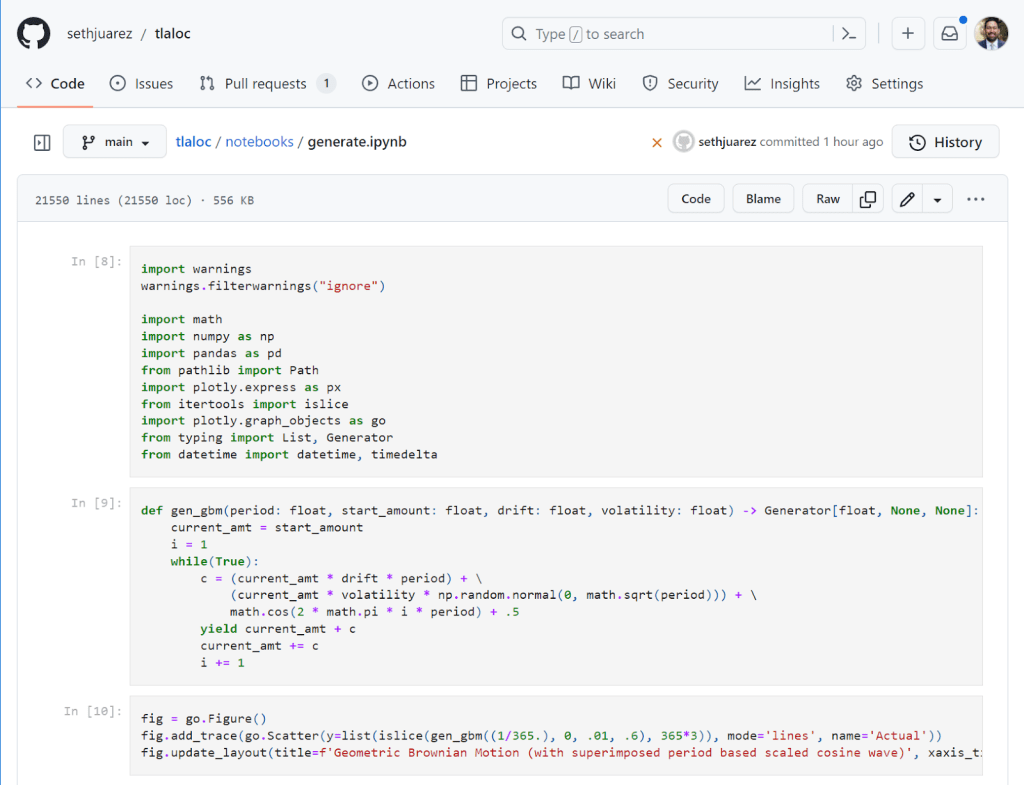
This improved rendering experience is amazing (and there’s a lovely dark mode too). In a recent pull-request I also noticed the following:
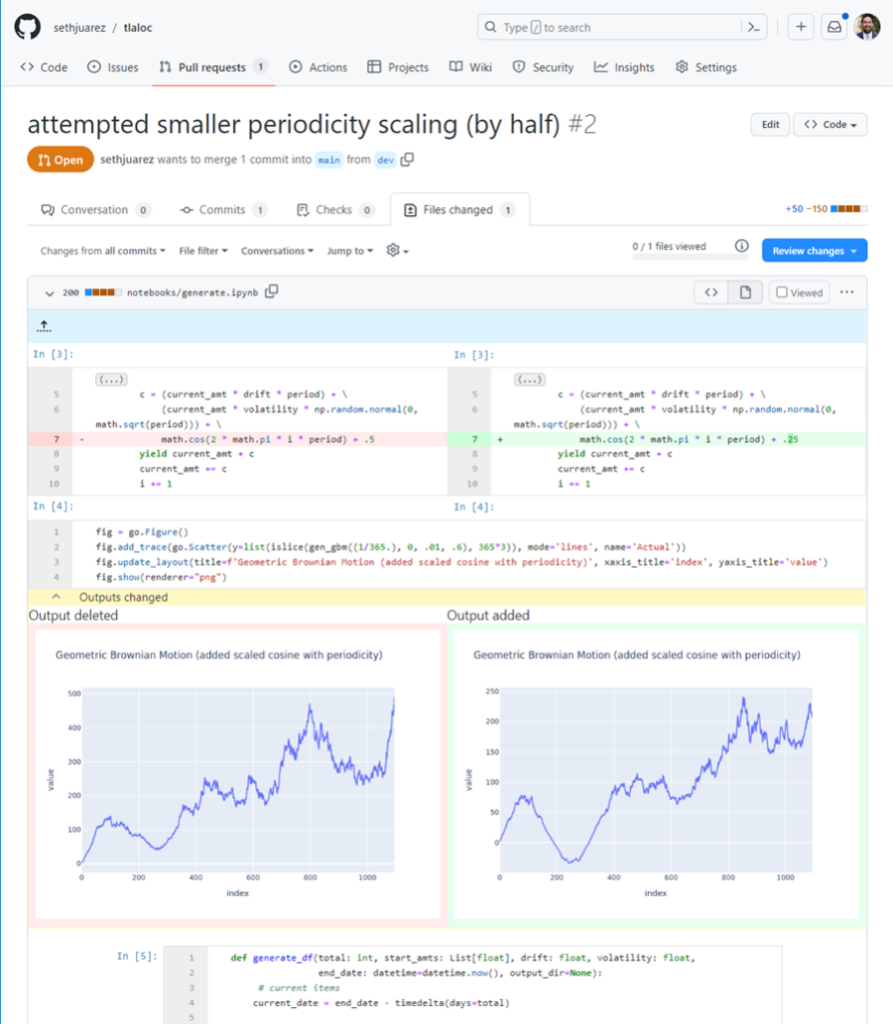
Not only can I see the cells that have been added, but I can also see side-by-side the code differences within the cells, as well as the literal outputs. I can see at a glance the code that has changed and the effect it produces thanks to NbDime running under the hood (shout out to the community for this awesome package).
Notebook Execution (and more)
While the rendering additions to GitHub are fantastic, there’s still the issue of executing the things in a reliable way when I’m away from my desk. Here’s a couple of gems we introduced at GitHub Universe to make these issues go away:
- GPUs for Codespaces
- Zero-config notebooks in Codespaces
- Edit your notebooks from VS Code, PyCharm, JupyterLab, on the web, or even using the CLI (powered by Codespaces)
I decided to try these things out for myself by opening an existing forecasting project that uses PyTorch to do time-series analysis. I dutifully created a new Codespace (but with options since I figured I would need to tell it to use a GPU).

Sure enough, there was a nice GPU option:

That was it! Codespaces found my requirements.txt file and went to work pip installing everything I needed.

After a few minutes (PyTorch is big) I wanted to check if the GPU worked (spoiler alert below):
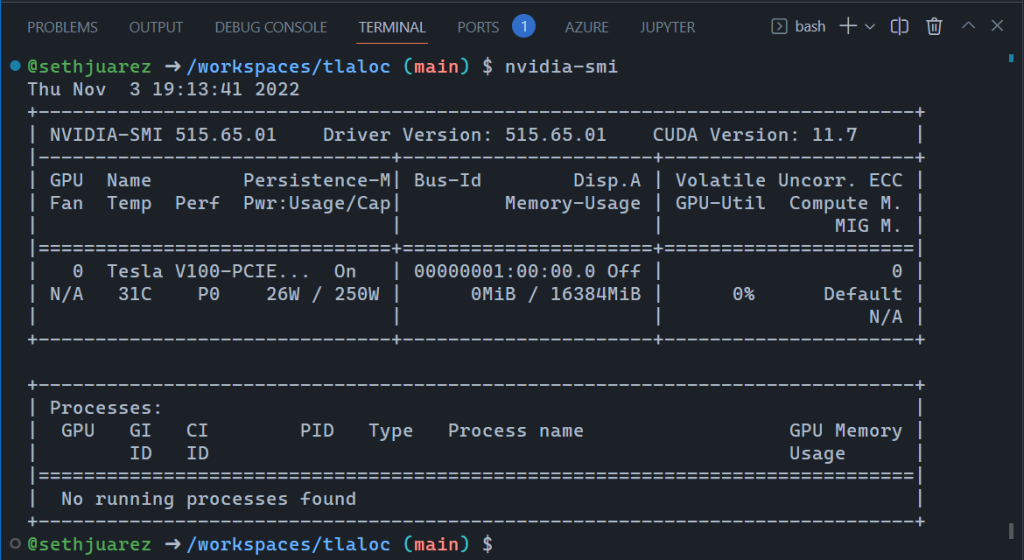
This is incredible! And, the notebook also worked exactly as it does when working locally:
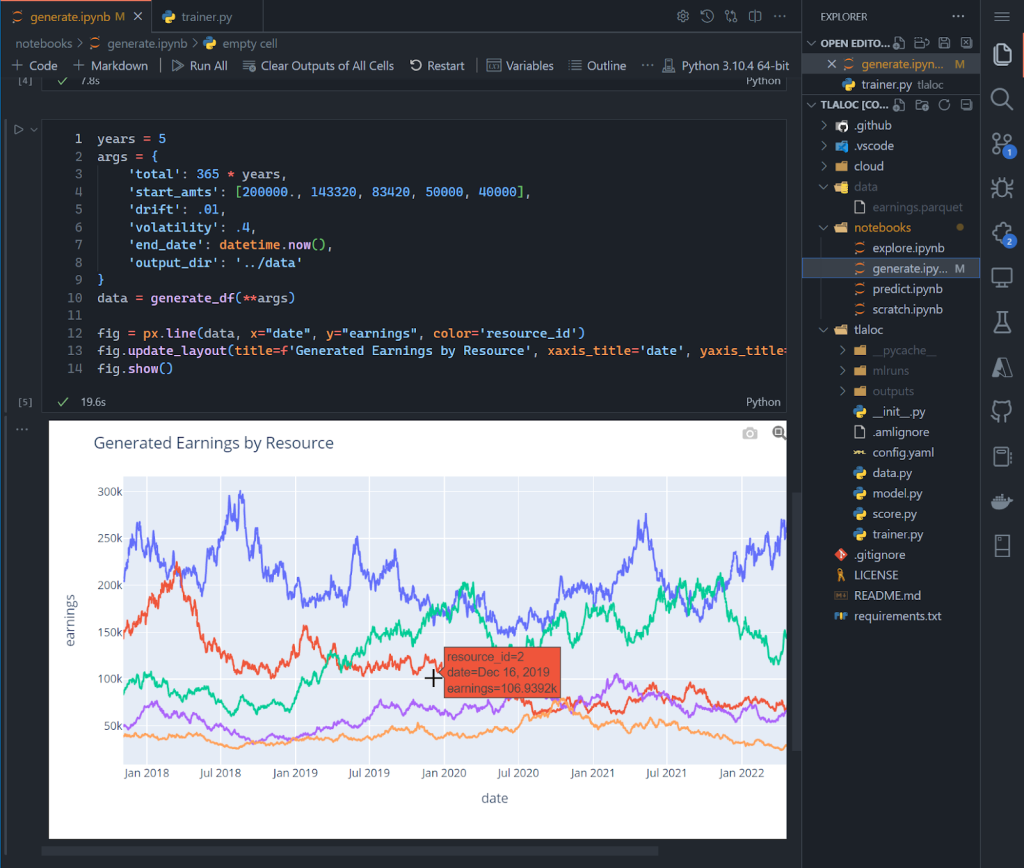
Again, this is in a browser! For kicks and giggles, I wanted to see if I could run the full blown model building process. For context, I believe notebooks are great for exploration but can become brittle when moving to repeatable processes. Eventually MLOps requires the movement of the salient code to their own scripts modules/scripts. In fact, it’s how I structure all my ML projects. If you sneak a peek above, you will see a notebooks folder and then a folder that contains the model training Python files. As an avid VSCode user I also set up a way to debug the model building process. So I crossed my fingers and started the debugging process:

I know this is a giant screenshot, but I wanted to show the full gravity of what is happening in the browser: I am debugging the build of a deep learning PyTorch model – with breakpoints and everything – on a GPU.
The last thing I wanted to show is the new JupyterLab feature enabled via the CLI or directly from the Codespaces page:
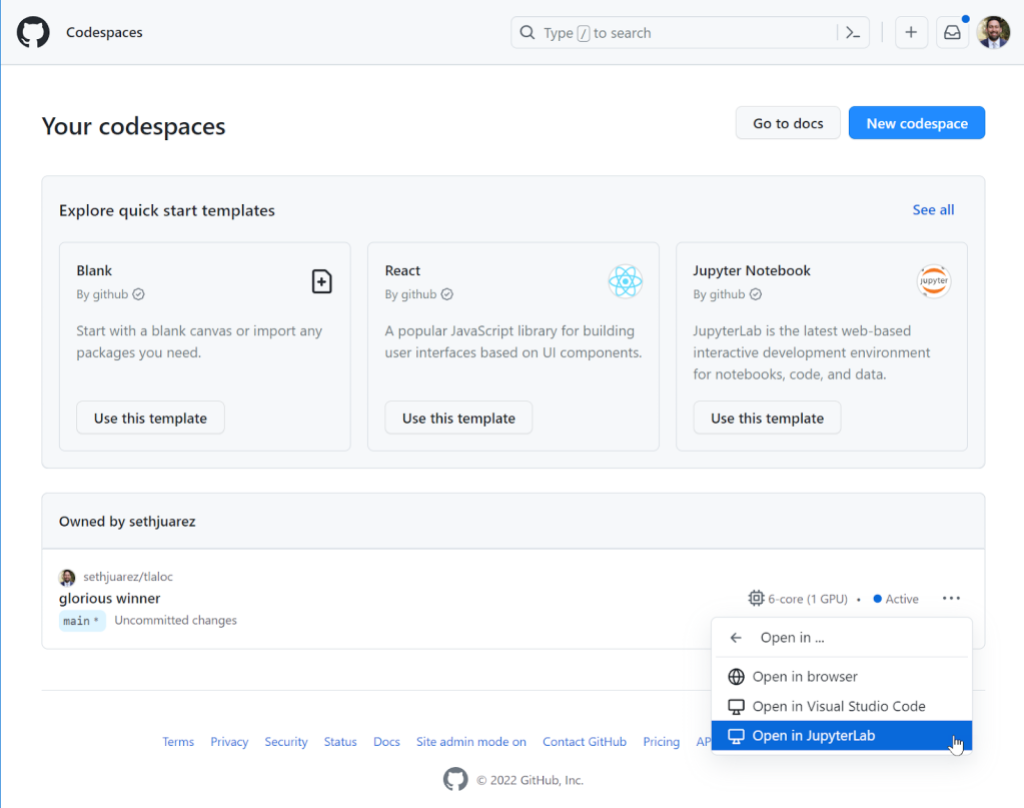
For some, JupyterLab is an indispensable part of their ML process – which is why it’s something we now support in its full glory:
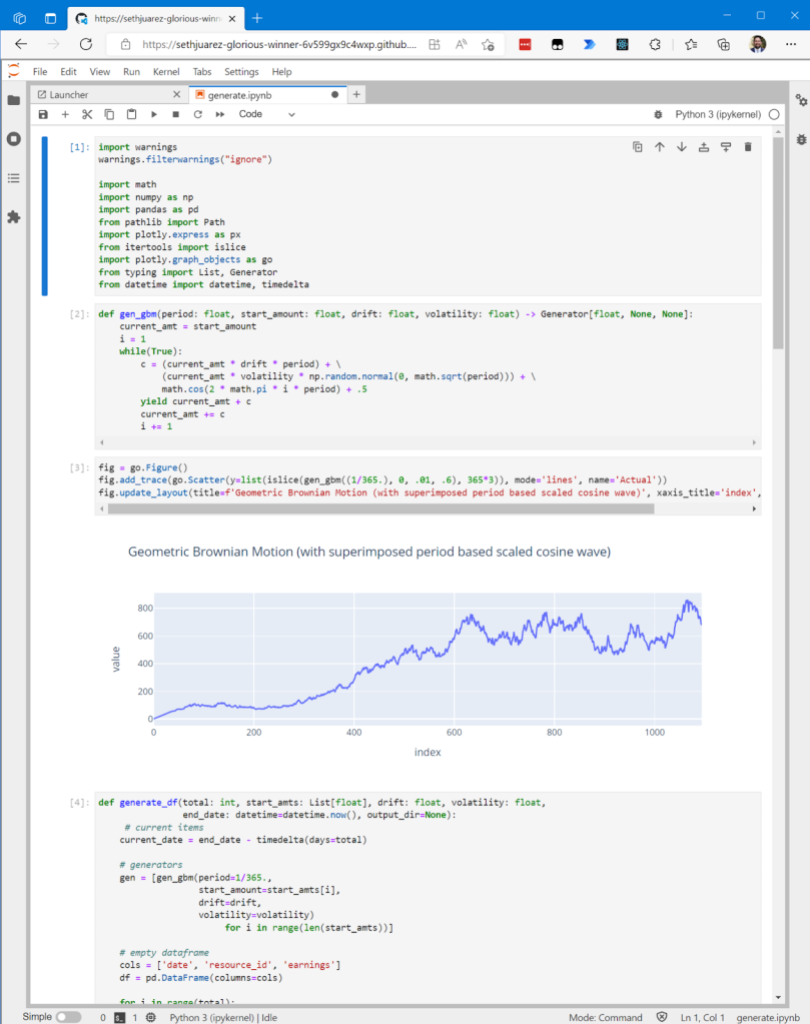
What if you’re a JupyterLab user only and don’t want to use the “Open In…” menu every time? There’s a setting for that here:

And because there’s always that one person who likes to do machine learning only from the command line (you know who I’m talking about):
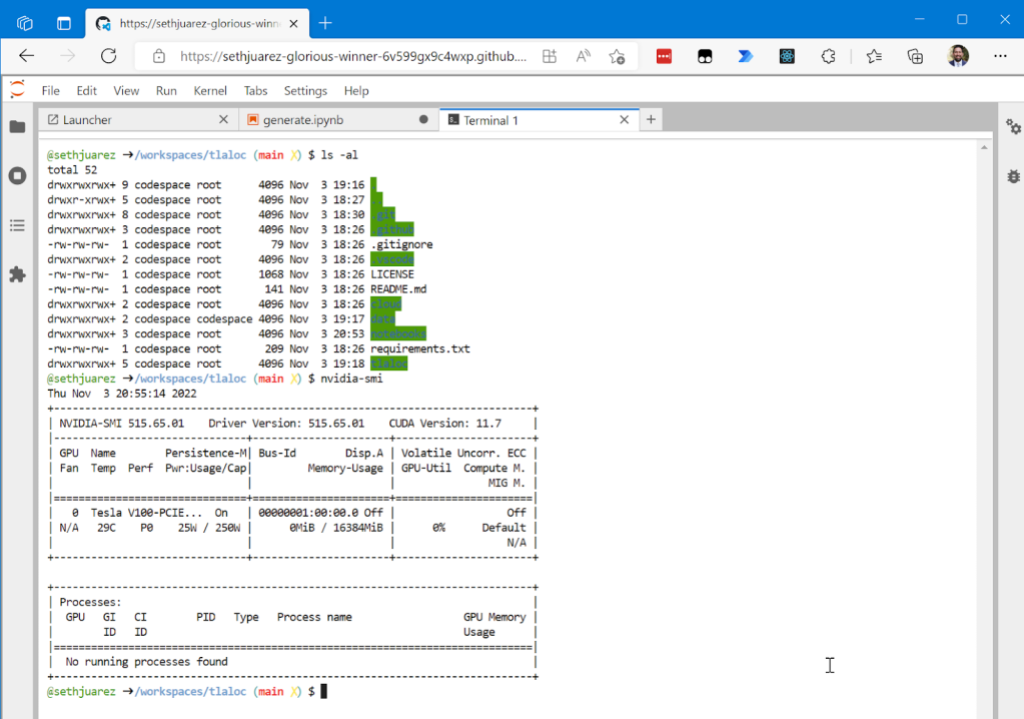
For good measure I wanted to show you that given it’s the same container, the GPU is still available.
Now, what if you want to just start up a notebook and try something? A File -> New Notebook experience is also available simply using this link: https://codespace.new/jupyter.
Summary
Like I said earlier, I’m a huge fan of machine learning and GitHub. The fact that we’re adding features to make the two better together is awesome. Now this might be a coincidence (I personally don’t think so), but the container name selected by Codespaces for this little exercise sums up how this all makes me feel: sethjuarez-glorious-winner (seriously, look at container url).
Would love to hear your thoughts on these and any other features you think would make machine learning and GitHub better together. In the meantime, get ready for the upcoming GPU SKU launch by signing up to be on waitlist. Until next time!
The GitHub Insider Newsletter
Get the best of GitHub. Once a month. Directly to your inbox.
SubscribeMore on Codespaces

What’s new with Codespaces from GitHub Universe 2022
We’re giving GitHub users 60 free hours each month on Codespaces. Learn what else we shipped for Codespaces at Universe this year.
Everything new from GitHub Universe 2022
See what we're building to enhance the most integrated developer platform that allows developers and enterprises to drive innovation with ease.
View GitHub code scanning findings directly in VS Code and GitHub Codespaces
Developers can now view GitHub code scanning findings directly in VS Code and GitHub Codespaces. The new Microsoft SARIF Viewer extension gives developers direct access to their code scanning results, making remediating vulnerabilities easier than ever.
More on machine learning
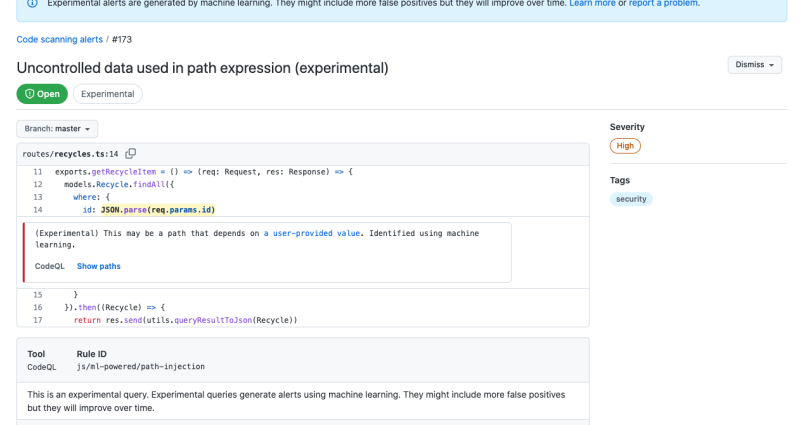
Code scanning finds more vulnerabilities using machine learning
Today we launched new code scanning analysis features powered by machine learning. The experimental analysis finds more of the most common types of vulnerabilities.
Leveraging machine learning to find security vulnerabilities
A behind-the-scenes peek into the machine learning framework powering new code scanning security alerts.
How MLOps can drive governance for machine learning: A conversation with Algorithmia
This post features a guest interview with Diego M. Oppenheimer, CEO at Algorithmia Over the past few years, machine learning has grown in adoption within the enterprise. More organizations are…
Recommend
About Joyk
Aggregate valuable and interesting links.
Joyk means Joy of geeK